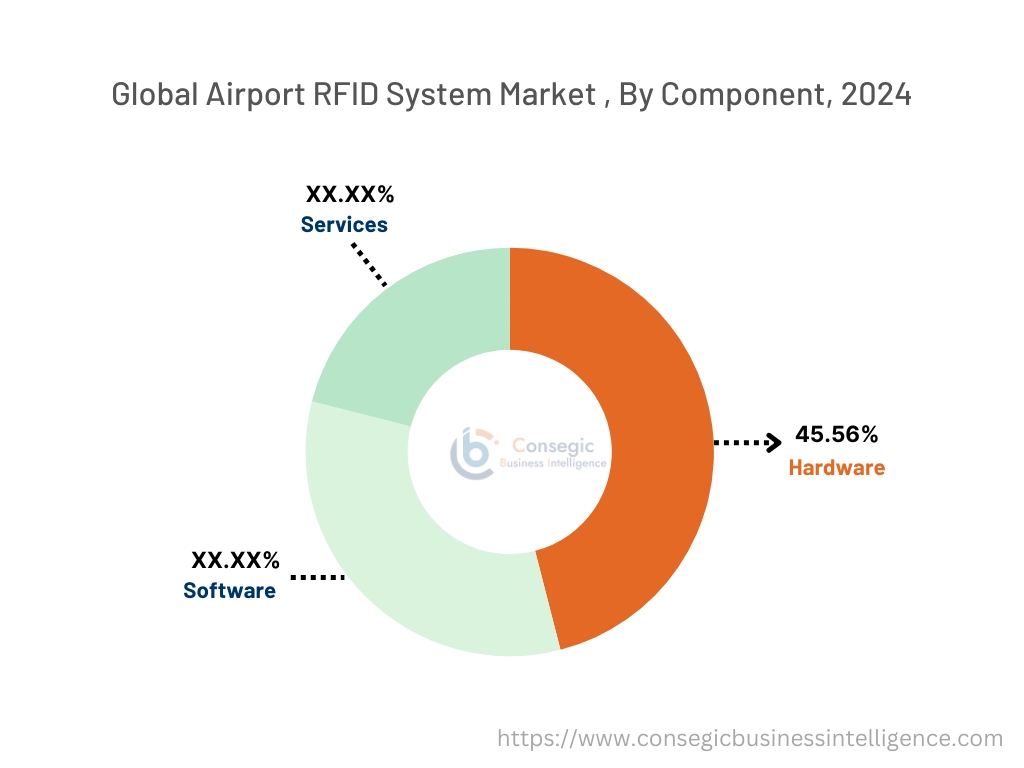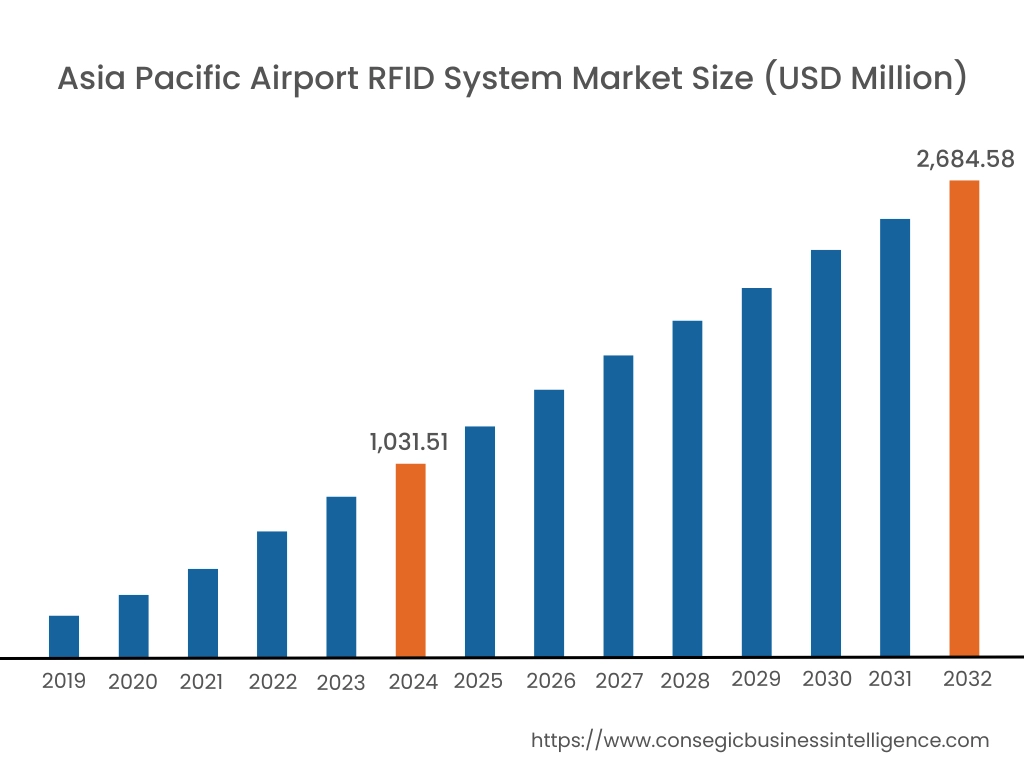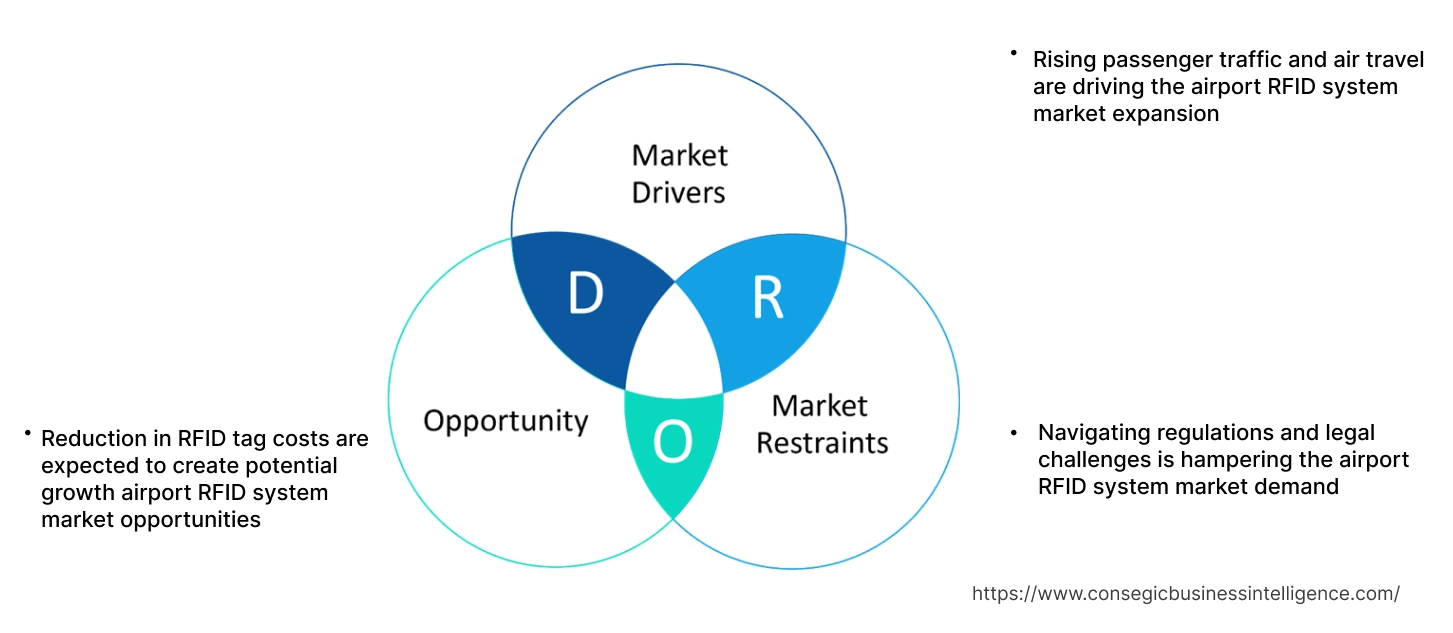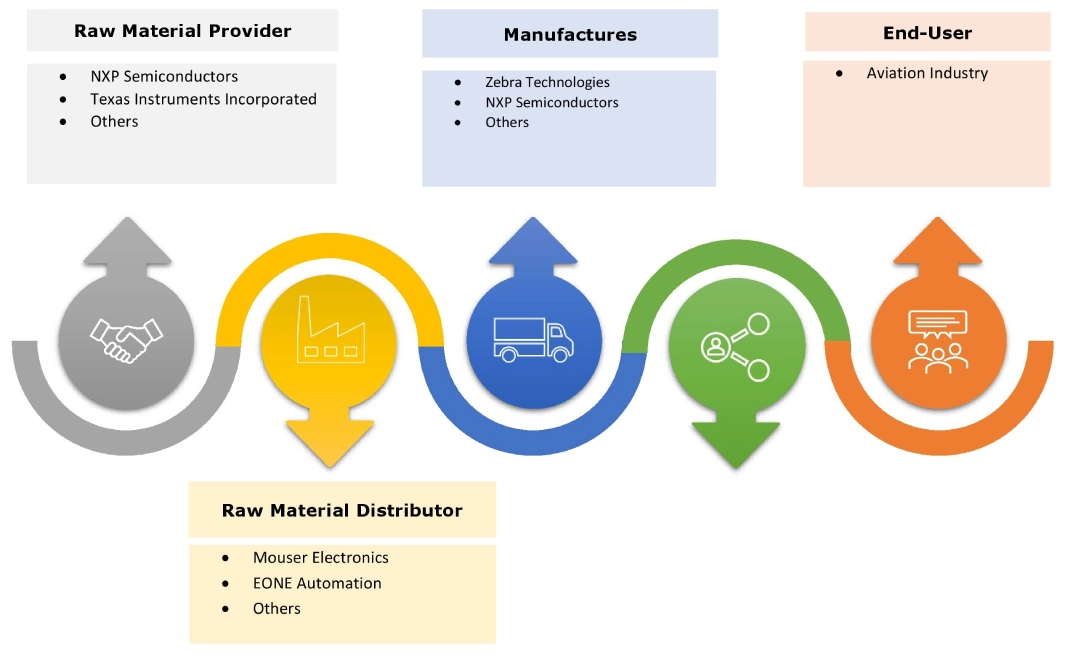- Summary
- Table Of Content
- Methodology
Airport RFID System Market Size:
Airport RFID System Market Size is estimated to reach over USD 10,453.97 Million by 2032 from a value of USD 4,299.58 Million in 2024 and is projected to grow by USD 4,766.94 Million in 2025, growing at a CAGR of 10.3% from 2025 to 2032.
Airport RFID System Market Scope & Overview:
RFID (Radio Frequency Identification) system has become essential to airport operations, fulfilling various roles such as tracking baggage, serviceable parts, and managing inventory. Its extensive application is driven by its effectiveness in improving efficiency and security in airport environments. As the aviation industry shifts its focus towards enhancing air connectivity, there are considerable opportunities for RFID system providers. Airlines and airports are aiming to improve passenger experience and optimize operational processes, are anticipated to increase investments in RFID technology. These systems provide real-time visibility and traceability of baggage and cargo, allowing airlines and airports to streamline handling processes, minimize errors, and boost overall efficiency.
Key Drivers:
Rising passenger traffic and air travel are driving the airport RFID system market expansion
In recent years, the number of air travel passengers has risen due to continuous economic growth, favorable population dynamics, demographic trends, and increased household incomes. Considering global security concerns, there is an increasing focus on strengthening security measures within the transportation sector. RFID technology is instrumental in fulfilling this objective. RFID technology facilitates personalized services, minimize waiting times, and elevate overall travel satisfaction. Additionally, ongoing advancements in RFID technology, including enhanced tag durability, extended read ranges, and greater data storage capacity, are promoting broader adoption throughout the travel industry.
- For instance, according to the reports of The International Air Transport Association (IATA) of May 2024, 44% percent of airlines have fully implemented Resolution 753, while an additional 41% are in progress. Furthermore, 75% of surveyed airports possess the capability for Resolution 753 baggage tracking.
Thus, according to the airport RFID system market analysis, the rise in passenger traffic is driving the airport RFID system market size.
Key Restraints:
Navigating regulations and legal challenges is hampering the airport RFID system market demand
Despite the significant potential advantages of RFID technology across multiple sectors, addressing regulatory and legal challenges continues to be a crucial factor in its broad adoption. The complex compliance requirements, particularly in highly regulated industries like the aviation sector, pose significant challenges for businesses and solution providers. The solution providers must strictly adhere to local privacy regulations governing the collection, storage, and use of RFID data to mitigate legal risks. Furthermore, concerns regarding liability and accountability in instances of RFID system failures or data inaccuracies emphasize the need for strong risk management strategies and clear contractual arrangements among stakeholders. These factors and analysis are hindering the progress of the airport RFID system market trends.
Future Opportunities :
Reduction in RFID tag costs are expected to create potential growth airport RFID system market opportunities
The decreased tag costs render RFID technology more accessible to airports of all sizes, not solely the largest hubs. This democratization of technology facilitates broader adoption. Additionally, with reduced upfront costs, the return on investment (ROI) for implementing RFID systems becomes more appealing. Airports can more readily justify the expenditure, as the advantages of enhanced efficiency and diminished mishandled baggage surpass the initial investment.
- For instance, in June 2022, Delhi Airport has launched a personalized baggage tag, powered by radio frequency identification (RFID) technology, providing passengers with real-time updates on the arrival time and the designated belt for their check-in luggage in the terminal. Travelers can purchase this tag at the airport, scan the code, and register it on the bag.hoi.in website.
Thus, based on the above analysis, these factors are driving the airport RFID system market opportunities.
Airport RFID System Market Segmental Analysis :
By Component:
Based on the component, the market is segmented into Hardware, Software, and Services.
Trends in the Component:
- The seamless integration of RFID tags with existing baggage handling systems, flight management systems, and other operational software are playing a vital role in modernizing airport operations.
- RFID systems are capable of automatically reading tag IDs from a distance, even when obstacles exist between the tag and the reader. Additionally, the performance of RFID sensors remains unaffected by unpredictable environmental changes.
The hardware segment accounted for the largest revenue share of 45.56% in the year 2024.
- Aircraft maintenance services primarily encompass fleet maintenance RFID readers which are equipped with integrated antennas and displays to facilitate user-friendly operation and seamless data integration. Additionally, RFID readers are utilized in field service applications, including asset tracking. These RFID readers enhance productivity and efficiency in airport operations by offering features such as shelf restocking.
- RFID enables automated inventory checks, expedites order picking, and enhances warehouse management, resulting in increased productivity and lower labor costs.
- It offers comprehensive visibility into the movement of goods, allowing for proactive issue resolution, quicker response times, and enhanced customer service.
- These factors would further drive the airport RFID system market during the forecast period.
The services segment is anticipated to register the fastest CAGR during the forecast period.
- Across various industries, there is an increasing demand for automated processes to improve efficiency and productivity. RFID technology is essential for facilitating automation by offering real-time tracking and data capture capabilities.
- RFID tags affixed to baggage enable real-time tracking throughout the entire journey, from check-in to baggage claim. This aids in minimizing baggage mishandling, reducing delays, and enhancing passenger satisfaction.
- Airports can utilize RFID to monitor valuable assets such as ground support equipment, trolleys, and other machinery, ensuring their efficient use while preventing loss or theft.
- In May 2024, the Maldives Airports Company Limited (MACL) announced the collaboration with Maldives Custom Services, to introduce smart gate services at Velana International Airport. With this collaboration, Travelers with bags equipped with RFID technology are required to use the airport’s Red Channel for customs clearance. Attempting to exit without clearance will activate an alarm at the smart gate.
- Thus, based on the analysis these factors and developments are driving the airport RFID system market size and trends during the forecast period.

By Frequency:
Based on the frequency, the market is segmented into Low, High, and Ultra-high.
Trends in frequency:
- The continuous research and development efforts are enhancing RFID tag performance, including extended read range, improved durability, and reduced costs.
- Ultra-high frequency enables real-time tracking, facilitating quicker and more efficient baggage delivery, thereby enhancing the passenger experience.
Ultra-high frequency accounted for the largest revenue share in the year 2024 and is expected to register the highest CAGR during the forecast period.
- Ultra-High Frequency (UHF) RFID systems function within the frequency range of 860 MHz to 960 MHz, providing extended read ranges and quicker data transfer rates. UHF RFID technology is commonly used in airport baggage handling systems, facilitating efficient tracking, and tracing of luggage throughout the airport, from check-in counters to aircraft loading areas.
- UHF RFID tags are employed for inventory management in airport retail stores and for monitoring assets and equipment across extensive airport facilities.
- Therefore, based on the above airport RFID system market analysis, the ultra-high frequency segment will be dominating the market during the forecast period.
By Application:
Based on the application, the market is segmented into Baggage Tracking and Handling, Inventory Management, Asset Tracking (Heavy Loading), Access Control, Identity Management, Product Authentication, Cargo Tracking, and Others.
Trends in the Application:
- Airports are focusing on enhancing passenger satisfaction by increasing operational efficiency and minimizing delays.
- Ongoing advancements in RFID technology, including enhanced tag durability, extended read ranges, and greater data capacity, are propelling market growth.
- RFID-based access control systems effectively monitor and manage staff movements, thereby improving overall security. Furthermore, these systems provide real-time reporting and monitoring features that are vital for adhering to security regulations and standards.
Baggage tracking and handling accounted for the largest revenue share in the year 2024 and is expected to register the highest CAGR during the forecast period.
- Baggage tracking stands out as a key application, driven by the necessity to minimize occurrences of lost or mishandled baggage. RFID technology offers a dependable and efficient solution for tracking baggage from check-in to final delivery, enhancing both the passenger experience and operational efficiency. The adoption of RFID for baggage tracking is further bolstered by stringent regulations and standards aimed at improving baggage handling processes.
- In the post-pandemic landscape, the easing of restrictions and an increase in international and domestic travellers are expected to drive demand for airport logistics equipment, capitalizing on potential passenger earnings. Additionally, the rise in visa-free countries is anticipated to contribute to the country's economic growth. Moreover, significant recovery in airport passenger numbers, coupled with favorable trends in air travel pricing, has facilitated the entry of new airline operators into the aviation sector.
- In December 2022, Siemens Logistics, a subsidiary of Siemens, announced the collaboration with T7 Global BHD, to secure the Kuala Lumpur airport terminal extension project, which entails the design, installation, systematic erection, and commissioning of a new baggage handling system.
- These factors would further supplement the airport RFID system market trends during the forecast period.
By End User:
Based on end user, the airport RFID system market is segmented into Commercial Airports and Military Airports.
Trends in the end user:
- The increasing global demand for air travel requires more efficient and streamlined airport operations, leading to the adoption of RFID technology.
- Airports are focusing on enhancing passenger satisfaction by improving operational efficiency, minimizing delays, and enriching the overall travel experience. RFID technology is essential in meeting these objectives.
- The growing government regulations concerning aviation security and passenger safety are propelling the implementation of RFID solutions to ensure compliance with regulatory standards.
- These trends would further drive the market during the forecast period.
The commercial airports segment accounted for the largest revenue share in the year 2024
- The robust security measures in airports are essential. RFID technology strengthens security by facilitating improved tracking of passengers, baggage, and cargo, which mitigates threats and enhances overall safety.
- The modernization and renovation of existing airport infrastructure to accommodate contemporary air travel needs are resulting in the implementation of RFID systems. For instance, Dubai International Airport has undergone a significant revamp in 2023, a process expected to continue for the next 5-7 years, enabling DXB to manage up to 120 million annual passengers within the next 15 years. These initiatives will assist airports in managing the increasing passenger volume while ensuring elevated levels of passenger satisfaction and efficient use of airport resources.
- These factors and analysis would further supplement the airport RFID system market during the forecast period.
The military airports segment is anticipated to register the fastest CAGR during the forecast period.
- RFID tags can be incorporated into military ID cards or worn by personnel, allowing for real-time tracking of individuals within airports and restricted areas. This capability enhances security by promptly identifying unauthorized individuals and supporting swift responses during emergencies.
- RFID technology can also monitor the movement of critical supplies, such as fuel, ammunition, and medical resources, throughout the supply chain. This ensures timely delivery and reduces interruptions to military operations.
- In emergencies, RFID technology can expedite the deployment of personnel and equipment, leading to quicker response times and better coordination.
- The integration of RFID with other technologies like IoT, AI, and big data analytics is facilitating more advanced military airport operations, including predictive maintenance, and enhanced situational awareness.
- These factors and analysis would further supplement the airport RFID system market share during the forecast period.
Regional Analysis:
The global market has been classified by region into North America, Europe, Asia-Pacific, MEA, and Latin America.

Asia Pacific airport RFID system market expansion is estimated to reach over USD 2,684.58 million by 2032 from a value of USD 1,031.51 million in 2024 and is projected to grow by USD 1,150.35 million in 2025. Out of this, China airport RFID system industry accounted for the maximum revenue share of 32.45%. The presence of the major original equipment manufacturers (OEMs) in the region, along with the increasing need for tracking, monitoring, and locating assets for security, safety, and resource optimization, are driving the demand of RFID system across several airports. According to data released by Airport Council International, the Asia-Pacific region is set to host 57% of the 300 new airports planned to open globally in the coming years. These new greenfield airports will aim to achieve net-zero emissions by 2050. ACI forecasts that the Asia-Pacific will account for 58% of global air passenger demand, necessitating significant upgrades to airport infrastructure, with investments projected to reach USD 1.3 trillion by 2040 to support this growth. Consequently, the need for new RFID systems in the region is expected to increase during the forecast period.
- For instance, in December 2022C, Changi Airport, Singapore, has introduced a trial service to assist passengers in monitoring the location of their baggage. The baggage tracker, accessible through the iChangi app, offers status updates for departing, arriving, and transferring passengers regarding their luggage. This service is available to passengers of Jetstar Asia, Malaysia Airlines, Scoot, and Singapore Airlines, Scoot.

North America airport RFID system market growth is estimated to reach over USD 3,522.99 million by 2032 from a value of USD 1,433.42 million in 2024 and is projected to grow by USD 1,590.67 million in 2025. North America represents a significant market for airport RFID systems, marked by early adoption of advanced technologies and the presence of many large international airports. The emphasis on improving passenger experience and operational efficiency propels the adoption of RFID solutions in this area. Additionally, the upgrading of outdated airport infrastructure, coupled with the development of current airports and the development of new ones, stimulates the requirement for RFID systems at regional airports. These factors would further supplement the regional airport RFID system market share during the forecast period.
- For instance, in March 2024, Southwest Airlines has recently awarded Leonardo a contract worth USD 27 million to implement a new baggage handling solution featuring cross-belt sorter technology at its transfer bag facility in Denver International Airport. This solution will replace the labour-intensive, manual sorting and tail-to-tail transfer bag method. By enhancing its baggage handling system, the airline aims to meet rigorous flight schedules, achieve quicker connection times, and expand capacity to manage future passenger volume growth.
As per the market analysis, the airport RFID system market in Europe is currently experiencing robust progression. According to Eurocontrol reports for the first quarter of 2023, passenger numbers at the top 40 airports in Europe saw substantial increase as compared to 2022, with increases of 83% in January, 56% in February, and 37% in March. This trend has prompted the adoption of advanced technologies such as RFID tracking, aimed at improving real-time baggage monitoring and decreasing mishandling rates. Additionally, the increasing air traffic in major countries such as Brazil, Mexico, and Colombia are driving airports to enhance their infrastructure, including the implementation of high-capacity baggage handling systems to accommodate the rising volume of passengers. According to reports of IATA, Brazil air traffic grew by 8. 0% in March 2023 as compared to the previous year. Airlines in the region are progressively working with airport authorities to incorporate seamless baggage tracking systems that comply with international aviation standards, including IATA's Resolution 753. Furthermore, airports in the MEA region are progressively adopting advanced technologies, including RFID tagging and automated guided vehicles (AGVs), to improve the precision and efficiency of baggage tracking and minimize mishandling incidents. Both government and private sectors are significantly investing in the expansion and modernization of airport infrastructure, particularly in countries such as the UAE, Saudi Arabia, and South Africa, to accommodate increasing passenger traffic and enhanced airline connectivity.
Top Key Players and Market Share Insights:
The global airport RFID system market is highly competitive with major players providing solutions to the national and international markets. Key players are adopting several strategies in research and development (R&D), product innovation, and end-user launches to hold a strong position in the market. Key players in the airport RFID system industry includes-
- Avery Dennison Corporation Dnata (U.S.)
- Zebra Technologies (U.S.)
- NXP Semiconductors (Netherlands)
- Alien Technology (U.S.)
- Checkpoint Systems, Inc. (U.S.)
- Dipole (Spain)
- Alstef Group (France)
- Impinj, Inc. (U.S.)
- CAEN RFID (Italy)
- Honeywell International Inc. (U.S.)
- GAO Group (Canada)
Recent Industry Developments :
Agreement:
- In March 2023, Alstef Group, the French provider of automated airport solutions, signed an agreement of USD 11.06 million, to supply new handling system for baggage for Terminal 2 of Sofia Airport. Alstef will provide, install, and maintain the baggage handling solution capable of processing up to 2,400 bags per hour, according to a statement from SOF Connect. The commissioning of this system will enable Terminal 2 to accommodate a larger volume of passengers than it currently does. The implementation of the new baggage handling system is a component of the airport's development plan, facilitating Terminal 2 to manage all traffic from the 70-year-old Terminal 1 building.
Airport RFID System Market Report Insights :
| Report Attributes | Report Details |
| Study Timeline | 2019-2032 |
| Market Size in 2032 | USD 10,453.97 Million |
| CAGR (2025-2032) | 10.3% |
| By Component |
|
| By Frequency |
|
| By Application |
|
| By End User |
|
| By Region |
|
| Key Players |
|
| North America | U.S. Canada Mexico |
| Europe | U.K. Germany France Spain Italy Russia Benelux Rest of Europe |
| APAC | China South Korea Japan India Australia ASEAN Rest of Asia-Pacific |
| Middle East and Africa | GCC Turkey South Africa Rest of MEA |
| LATAM | Brazil Argentina Chile Rest of LATAM |
| Report Coverage |
|
Key Questions Answered in the Report
How big is the Airport RFID System market? +
Airport RFID System Market Size is estimated to reach over USD 10,453.97 Million by 2032 from a value of USD 4,299.58 Million in 2024 and is projected to grow by USD 4,766.94 Million in 2025, growing at a CAGR of 10.3%from 2025 to 2032.
Which is the fastest-growing region in the Airport RFID System market? +
Asia-Pacific is the region experiencing the most rapid growth in the market.
What specific segmentation details are covered in the Airport RFID System report? +
The airport RFID system report includes specific segmentation details for component, frequency, application, end user and region.
Who are the major players in the Airport RFID System market? +
The key participants in the market are Avery Dennison Corporation Dnata (U.S.), Zebra Technologies (U.S.), NXP Semiconductors (Netherlands), Alien Technology (U.S.), Checkpoint Systems, Inc. (U.S.), Dipole (Spain), Impinj, Inc. (U.S.), CAEN RFID (Italy), Honeywell International Inc. (U.S.), GAO Group (Canada), and Alstef Group (France), and others.



